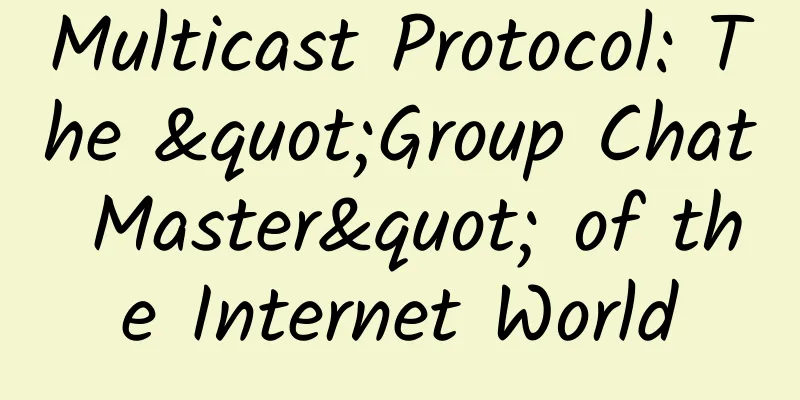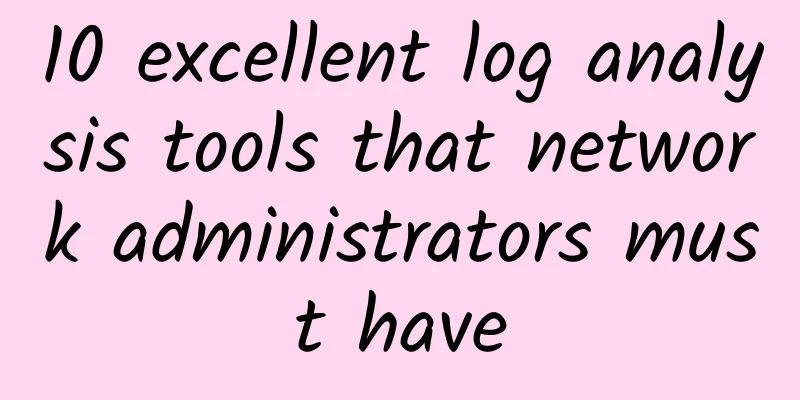Multicast Protocol: The "Group Chat Master" of the Internet World

|
Fans who love to think, have you ever had these confusions like me? When participating in a multi-party video conference, why can we receive the conference image smoothly? When watching the live broadcast of a gala, why can tens of thousands of viewers see the program at the same time? When playing games online with friends, what ensures that all players can receive game information in real time? … In fact, all of these are inseparable from a magical network protocol - the multicast protocol. picture Today, I will take you to unveil the mystery of multicast protocol and explore the secret weapon of the Internet. 1. What is a multicast protocol?The multicast protocol is a network communication protocol used for point-to-multipoint or multipoint-to-multipoint multicast communication. We can use a diagram to distinguish unicast, broadcast, and multicast. picture IP unicast (Unicast), referred to as unicast Unicast is a point-to-point communication method that requires a point-to-point network connection between the sender and each receiver. IP Broadcast (Broadcast), referred to as broadcast Broadcasting is a point-to-all communication. If a data packet is broadcast in an IP subnet, all hosts in the subnet will receive the data packet regardless of whether the hosts in the subnet are willing to receive the data packet. IP Multicast, referred to as multicast Multicast is between unicast and broadcast, and is a point-to-multipoint or multipoint-to-multipoint communication method. When a host sends information to a group of hosts, all hosts in a group can receive the information. 2. How does the multicast protocol work?Before understanding the working principle of the multicast protocol, let us first understand the basic concepts of multicast.
picture To understand these concepts more simply, we compare the multicast source to a teacher, the multicast group to a communication interest group, and the students in this group to the communication group members. The multicast router can be a class committee member, such as the monitor, study committee member, etc., who can help the teacher to deliver messages, and is responsible for delivering the teacher's information more widely to every student in the communication interest group. In a class, the transmission of information is often complicated. The teacher may first pass information to the class committee, and then the information is passed on to the students in the communication interest group. At the same time, the class monitor and the study committee member may also pass information to each other. This information transmission network composed of teachers and students is similar to a multicast distribution tree. In this tree structure, information is transmitted from the teacher (multicast source) to each student (multicast group member) along the shortest path, ensuring the effective dissemination of information. picture In the network, multicast protocols help routers and switches know which devices are interested in a specific "group" (that is, the multicast group address). When a device joins or leaves a multicast group, the device will notify the network, and the network will adjust the data transmission path accordingly to ensure that the information is only transmitted to the required devices. Simply put, a multicast protocol allows a data sender to efficiently deliver information to multiple interested receivers without disturbing other network users who are not interested in the information. The working process of the multicast protocol can be divided into the following parts:
picture
picture
picture 3. What are the multicast protocols?In the process of working on multicast protocol, we talked about some mechanisms and routing protocols, which constitute the system of multicast protocol. picture Group Membership Management ProtocolThe group membership management protocol is a mechanism used by multicast group members to join or leave the multicast group. It is mainly used to manage and maintain the membership of the multicast group and ensure that multicast messages are sent only to receivers who are interested in the message. Take the communication interest group mentioned above as an example. If you are a student who wants to join the interest group, you will tell the study committee member that you want to join the communication interest group through the group member management agreement. The study committee will record your information and notify the teacher. After receiving the "registration information", the teacher will update the list of members of the communication interest group. When the communication interest group has a new activity notification, the teacher will only send the notification to the interest group members including you. Commonly used group membership management protocols include IGMP (Internet Group Management Protocol) and MLD (Multicast Listener Discovery). IGMP and MLD serve IPv4 and IPv6 networks respectively. They have similar functions but differ in application scenarios, protocol details, and network environments.
Multicast Routing ProtocolThe multicast routing protocol is a protocol that runs between multicast routers. It is mainly used to control the transmission path of multicast data streams between multicast routers, ensuring that multicast messages are only sent to network nodes that request and can handle this specific multicast traffic, thereby optimizing the use of network resources and reducing unnecessary bandwidth consumption. Multicast routing protocols are divided into intra-domain multicast routing protocols and inter-domain multicast routing protocols. picture Taking interest groups as an example, information transmission between different interest groups in the same class uses the intra-domain multicast routing protocol, and information transmission between different interest groups in different classes uses the inter-domain multicast routing protocol.
picture
4. Advantages and Challenges of Multicast ProtocolsMulticast protocols have many advantages in practical applications:
Although multicast protocols have many advantages, they still face some challenges in actual deployment:
picture As a key technology to improve network communication efficiency, multicast protocol has demonstrated unique advantages in many fields. With the continuous development of Internet technology and the increasing application demand, multicast protocol will continue to play an important role in promoting the efficient and stable development of network communication. In the future, with the further maturity of technology and the continuous improvement of infrastructure, multicast protocol is expected to be widely used in more scenarios, bringing a better network experience. After this study, I believe everyone has learned about multicast protocols. What other potential application scenarios do you think multicast protocols have? Or which multicast protocol do you want to learn more about? |
<<: Trip.com QUIC high availability and performance improvements
>>: PnetLab storage is insufficient? Teach you how to expand it step by step
Recommend
2018 Top Ten Internet Trends Prediction: 5G Becomes the Focus
Whether it is the turbulent forty years in Wu Xia...
How to play the NB-IoT game in 2019?
NB-IoT technology is a low-power wide area networ...
What exactly is semantic communication?
As we all know, since the outbreak of the informa...
Can 5G extend the life of HTC’s desperate VR business?
5G is like a "tonic pill" that has sudd...
Python Black Technology: WiFi Cracking, Has Your WiFi Been Hacked Again?
Today I bring you a fun thing to crack WiFi passw...
spinservers promotion: San Jose 10Gbps bandwidth server from $99/month, Dallas from $89/month
spinservers has launched a new promotion this mon...
Wi-Fi 7: Everything we know so far!
Over the past few decades, Wi-Fi has become the w...
Six years after LPWAN became popular, what happened to non-cellular IoT technologies?
If you have to ask when LPWAN entered the public ...
Development Trend of International 5G Private Network Applications
As an important driving force for the digital tra...
How data centers work today and in the future
The data center of the future will rely on cloud ...
A brief discussion on Telemetry network telemetry traffic analysis technology
·Introduction· With the rapid development of clo...
The truth about 5G speed, is your 5G package worth it?
[[326825]] We'll cover the different 5G speed...
Elisa's 5G network now covers half of Finland's population
Finnish operator Elisa said its 5G network has be...
Yunfan Accelerator CEO Tong Yongyue resigns, founder Wang Xijie takes over and sets sail again
[51CTO.com original article] On November 23, 2017...
Why are 4.3 billion IPv4s not enough? (IPv6 should take the blame for IPv4)
As we all know, the so-called IP address is a 32-...









